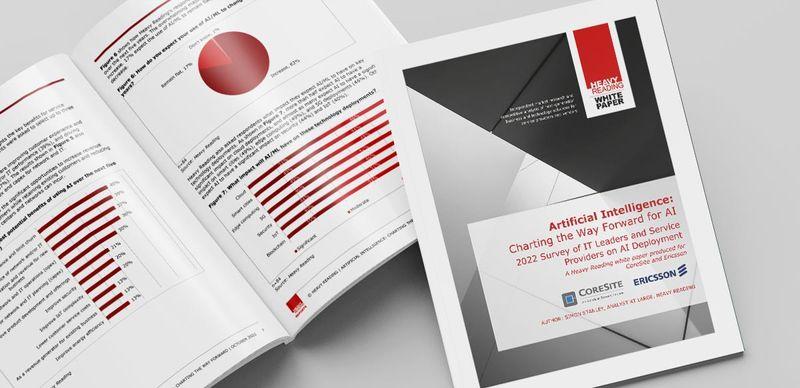
5 Ways Artificial Intelligence is Transforming Industries Now
In a new white paper, Artificial Intelligence: Charting the Way Forward for AI, Analyst Simon Stanley reported that 82% of IT leaders and service providers surveyed expect their use of AI and machine learning (ML) to increase in the next five years.1 Stanley’s research also shows that the goals for leaning into AI/ML include:
- Improve customer experience
- Drive innovation and revenue for new business
- Cut capital and operational expenses
No surprise, really. But it got me thinking about other industries currently implementing AI/ML to reach identical goals and show that business objectives are being achieved with cloud-hosted AI solutions.
AI in Contact Centers
When someone reaches the point where they have a question or complaint, a contact center has the opportunity to deliver an outstanding customer experience – or lose a customer forever. AI/ML can simplify customer service operations in a variety of ways, including enabling truly intuitive self-service capabilities such as intelligent voice response (IVR) and chatbots. A report by Aspect Software (now Alvaria, an enterprise contact center provider) includes the finding that 73% of customers prefer to solve issues on their own.2 Reading further in that report, you would also learn that one-third of the people surveyed would “rather clean a toilet” than speak with customer service!
Natural language processing (NLP) is an AI technology that helps IVR and chatbots determine a course of action and incrementally refine AI decision-making. NLP enables understanding sentiment expressed in written or spoken language. By interpreting and comparing what’s communicated to defined rules, spoken or chatted interaction can be contextualized, and the system routes angry customers to agents (for example) or happy customers to the next step in a process. Meanwhile, sentiment analysis of all customer interactions reveals positive and negative aspects of a service or product, taking guesswork out of process improvements or product roadmaps.
A moment ago, we mentioned business objectives. AI is helping contact center employees stay motivated and productive. AI steps in to solve staff shortage issues. And AI can analyze customer journeys and point to ways to increase the lifetime value of each customer.
AI in Financial Services
Banks and other financial services enterprises are constantly balancing risks and rewards in many areas of their businesses. A whitepaper published by The Economist Intelligence Unit includes this finding: Fraud detection is the top use case of AI by banks, which reduces risk for customers and the bank. Conversely, “legal responsibility stemming from AI decisions”3 was cited as a top barrier to adoption of AI by banks. So, while banks welcome AI pattern detection that exposes fraud, they are worried that false positives produced by AI could frustrate customers making legitimate purchases while vacationing.
Inflation, global conflict, lingering supply chain issues and political uncertainty are chief reasons investors are rebalancing portfolios. AI is being used to help optimize financial strategies, develop risk profiles and analyze market sentiment, allowing wealth firms to build products aligned with clients’ risk tolerance and investment goals. Stock auto-trading has been used for decades; today’s cloud-enabled automated trading platforms now take advantage of ML to make better-informed decisions.
AI in Cybersecurity
Cybersecurity firm Barracuda recently reported that bots make up nearly 66% of internet traffic, with bad bots making up nearly 40% of all traffic.4 Detecting and thwarting bots is an area of cybersecurity that calls for real-time monitoring to determine whether a bot is malicious (typically automated) or a “good bot,” such as search engine crawlers, social network bots, aggregator crawlers or monitoring bots. That means analyzing literally millions of behavior patterns and, along with threat hunting cybersecurity experts, blocking or allowing access.
You’ve heard a lot about ransomware lately. Eight out of 10 ransomware attacks were self-inflicted, when someone opened a file containing malware. In response, vendors have trained ML solutions specific to end-point security that identify and block malware actions.
Those are just two examples. You could visit Seceon, one of the members of CoreSite’s marketplace ecosystem, to learn about other use cases including brute force attacks, insider threats, data breaches and DDoS (distributed denial of service).
AI in Health Care
Medical imaging analysis using AI can help clinicians and physicians review scans with great accuracy, and triage multiple patient scan results to prioritize treatment. AI enables rapid analysis of unstructured data in records from around the globe, cutting the time to finding information needed to diagnose problems.

COVID-19 changed the world in many ways, including vaccine development, which falls under the category of computational immunology. In the past, it took years to develop vaccine candidates. Major drug companies shortened the period to under a year to battle the pandemic. Pfizer, for example, slashed a step in the process from 30 days to 22 hours using a machine learning tool called Smart Data Query to “clean up” patient data.
The number of AI/ML health care use cases is growing rapidly. From electronic health care records and chat bots to robot-assisted surgery and more accurate cancer diagnosis, AI is steadily becoming a new type of physician’s assistant.
AI in Supply Chain/Logistics
The modern supply chain integrates marketing and sales, procurement and planning as well as production and distribution. Long gone are the days when the focus was moving goods at the least cost. Today, environmental impact, responding to agile production strategies, inventory analysis, scheduling and more dynamic variables factor into achieving the greatest value for the supplier and the customer.
Artificial intelligence can make sense from the miasma of data. Here are two examples, found in Succeeding in the AI supply-chain revolution5, a McKinsey & Company article.
- A wheat trading company optimized its harvesting and collection plan spanning 22,000 fields and more than 400 storage silos, and in the process capturing value from wheat-quality segregation and logistic costs.
- A global basic chemicals company transformed its sales-and-operations monthly exercise of end-to-end integrated business planning. It generated more value by optimizing product and customer mix, volume allocation across plants, and raw material and supplier mix, among other factors.
If you look at that article, you’ll learn that the breadth of transformation required doesn’t come easily. But there are many new solutions available, some of which have shown to improve logistics costs by 15%, inventory levels by 35% and service levels by 65%.5
AI in Colocation Data Centers

AI software can be located on-premises, in public cloud or in private clouds in a data center, which enables companies to choose the location that meets industry regulatory requirements. Data centers provide an environment in which to deploy the IT infrastructure capable of handling the data volumes, quickly (and dynamically) scale according to changing business conditions and serve as a network interconnection hub – capabilities critical to AI applications.
Elon Musk says self-driving Teslas will be available in 2023. Accenture predicts that there is no way a fully independent self-driving car will be on the road before 2030, and even then only “top of range” vehicles will have the connectivity and artificial intelligence robust enough to safely navigate complex driving situations.
At the other end of the AI-complexity continuum, Amazon’s Alexa has tens of thousands of skills that people call on to simplify everything from cooking pasta to protecting their residence when they are away. About 35% of Americans 18 and older (about 156,000,000 people) own a smart speaker.
Maybe someday you will be able to read this blog while your car takes you from point A to point B. Maybe Alexa is already part of your day, every day. Either way, you have (or will have) AI/ML, clouds and low-latency connectivity to thank for it.
Learn more about opportunities and challenges for artificial intelligence adoption in data centers and operator networks and helping industry leaders and their customers evaluate the different approaches in our recent white paper, Artificial Intelligence: Charting the Way Forward for AI.










